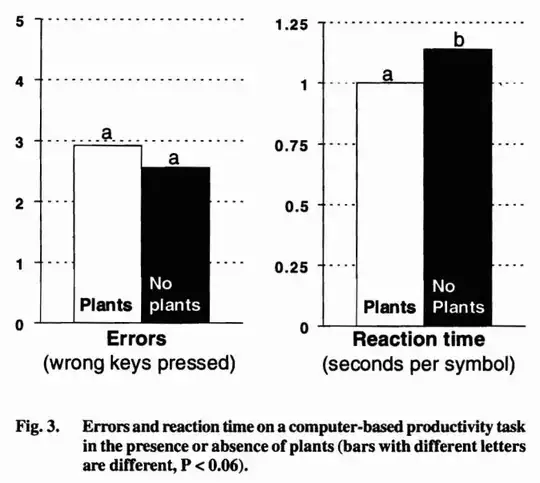Treehugger: Research has shown that a healthy office space with plants and open windows is more conducive to productivity.
Do plants in the office increase the productivity of employees?
Treehugger: Research has shown that a healthy office space with plants and open windows is more conducive to productivity.
Do plants in the office increase the productivity of employees?
There doesn't seem to be an obvious increase of productivity, despite some biased summaries. It seems to depend on how the workplace is and the employees themselves:
Lohr, Virginia I., Caroline H. Pearson-Mims, and Georgia K. Goodwin. "Interior plants may improve worker productivity and reduce stress in a windowless environment." Journal of Environmental Horticulture 14 (1996): 97-100.:
This study documents some of the benefits of adding plants to a windowless work place-a college computer lab. Participants' blood pressure and emotions were monitored while completing a simple, timed computer task in the presence or absence of plants. When plants were added to this interior space, the participants were more productive (12% quicker reaction time on the computer task) and less stressed (systolic blood pressure readings lowered by one to four units). Immediately after completing the task, participants in the room with plants present reported feeling more attentive (an increase of 0.5 on a self-reported scale from one to five) than people in the room with no plants.

Larsen, Larissa, et al. "Plants in the Workplace The Effects of Plant Density on Productivity, Attitudes, and Perceptions." Environment and Behavior 30.3 (1998): 261-281.:
This experiment measures the effects of indoor plants on participants' productivity, attitude toward the workplace, and overall mood in the office environment. In an office randomly altered to include no plants, a moderate number of plants, and a high number of plants, paid participants (N = 81) performed timed productivity tasks and completed a survey questionnaire. Surprisingly, the results of the productivity task showed an inverse linear relationship to the number of plants in the office, but self-reported perceptions of performance increased relative to the number of plants in the office. Consistent with expectations, participants reported higher levels of mood, perceived office attractiveness, and (in some cases) perceived comfort when plants were present than when they were not present. Decreased productivity scores are linked to the influence of positive and negative affect on decision making and cognitive processing.
Ulrich, Roger S. "Human responses to vegetation and landscapes." Landscape and urban planning 13 (1986): 29-44.:
The rapidly expanding research record concerning aesthetic, emotional and physiological response to visual landscapes is summarized, with emphasis on aesthetic preferences for views containing trees and other vegetation. The survey is set within a conceptual perspective suggesting that affective responses such as aesthetic preference are central to a landscape observer's thoughts, conscious experience and behavior. Substantial progress has been made in developing models that relate aesthetic responses to specific visual properties of environments. When aesthetic preferences are compared for urban and unspectacular natural views, American and European adult groups evidence a strong tendency to prefer nature. However, liking for urban scenes usually increases when trees and other vegetation are present. Views of nature, compared to most urban scenes lacking natural elements such as trees, appear to have more positive influences on emotional and physiological states. The benefits of visual encounters with vegetation may be greatest for individuals experiencing stress or anxiety. Recent research demonstrates that responses to trees and other vegetation can be linked directly to health, and in turn related to economic benefits of visual quality.